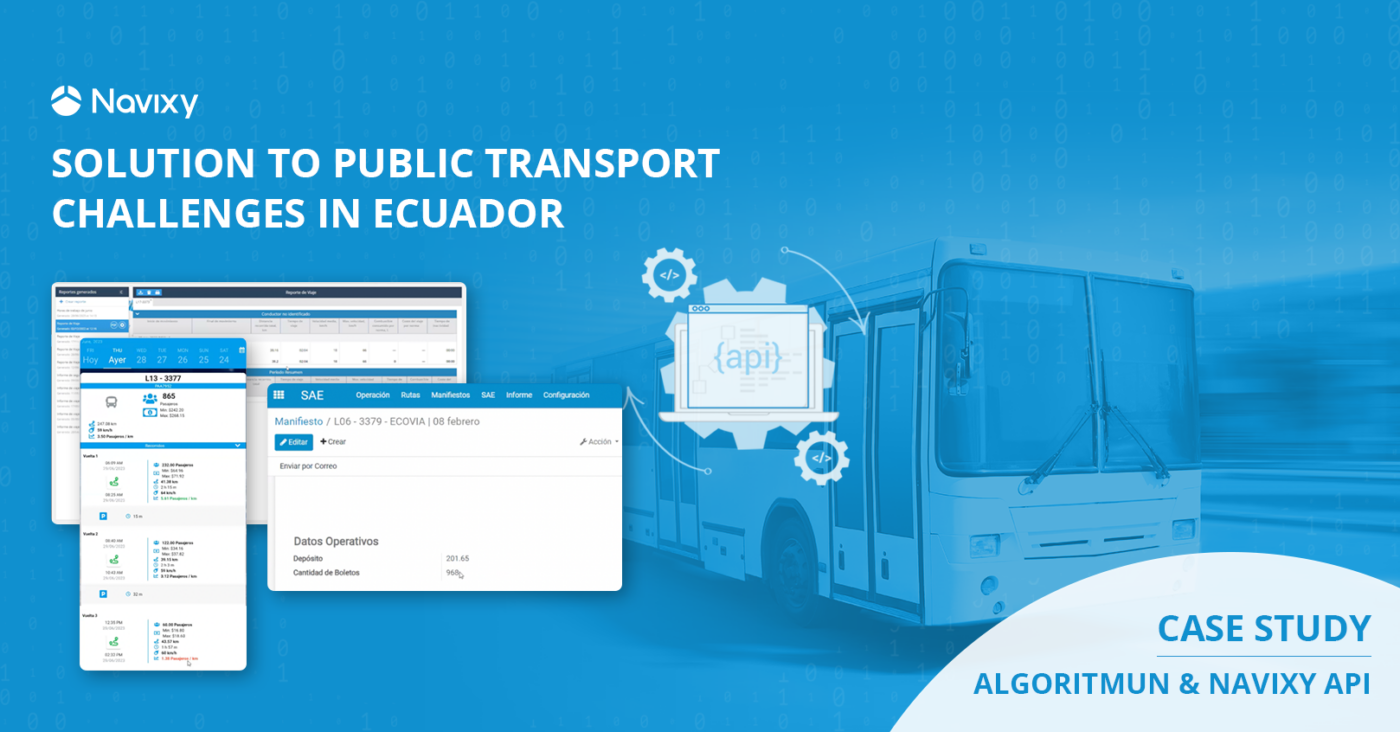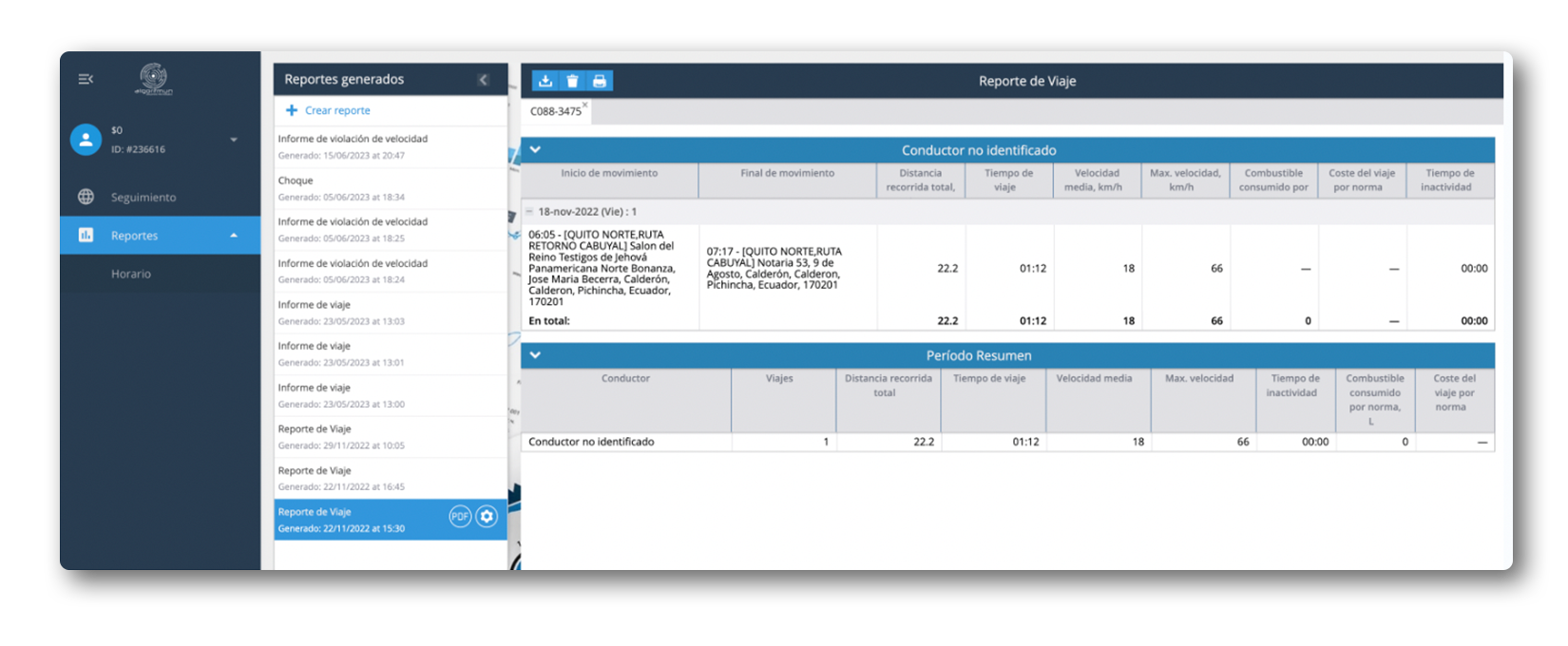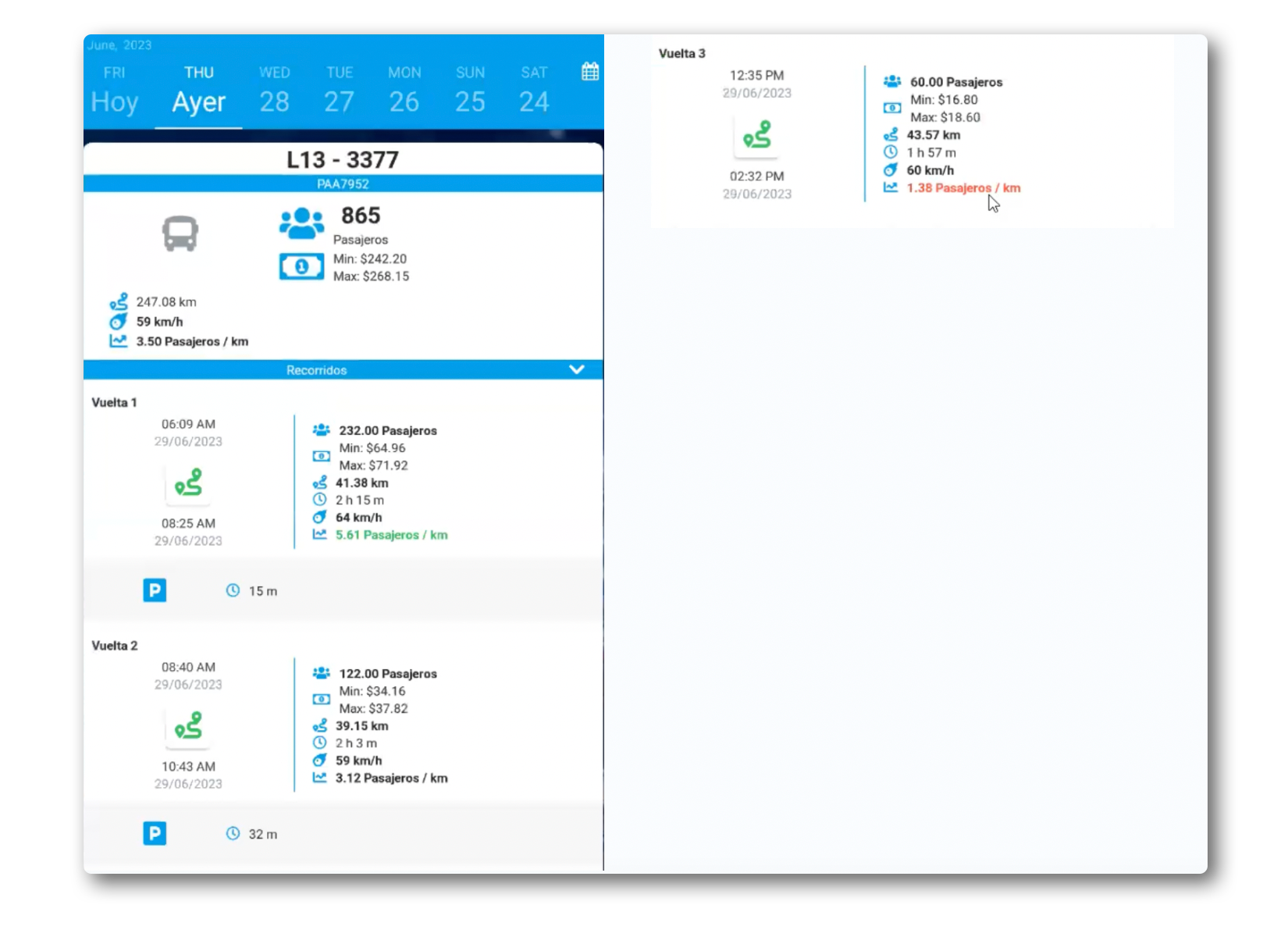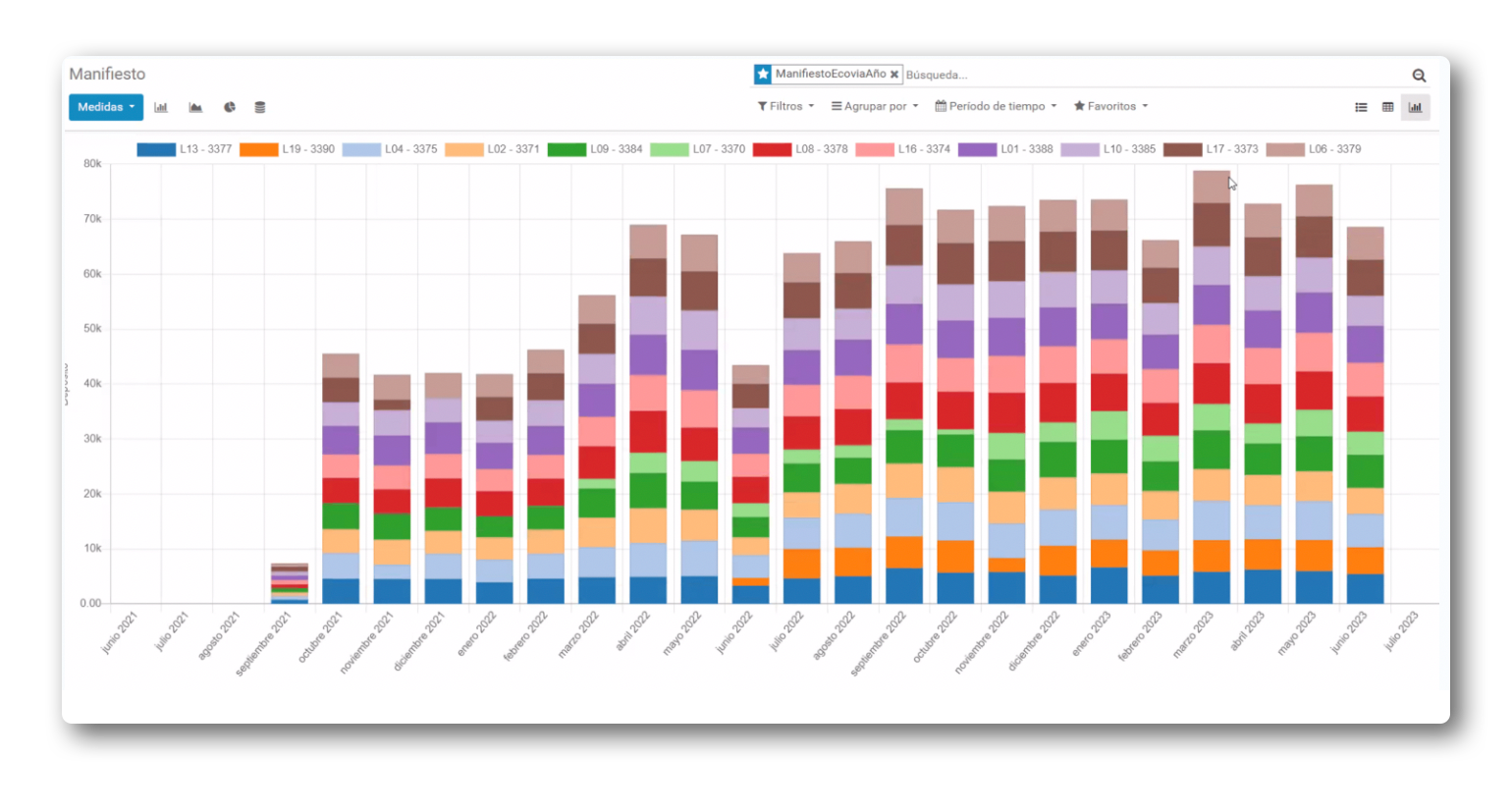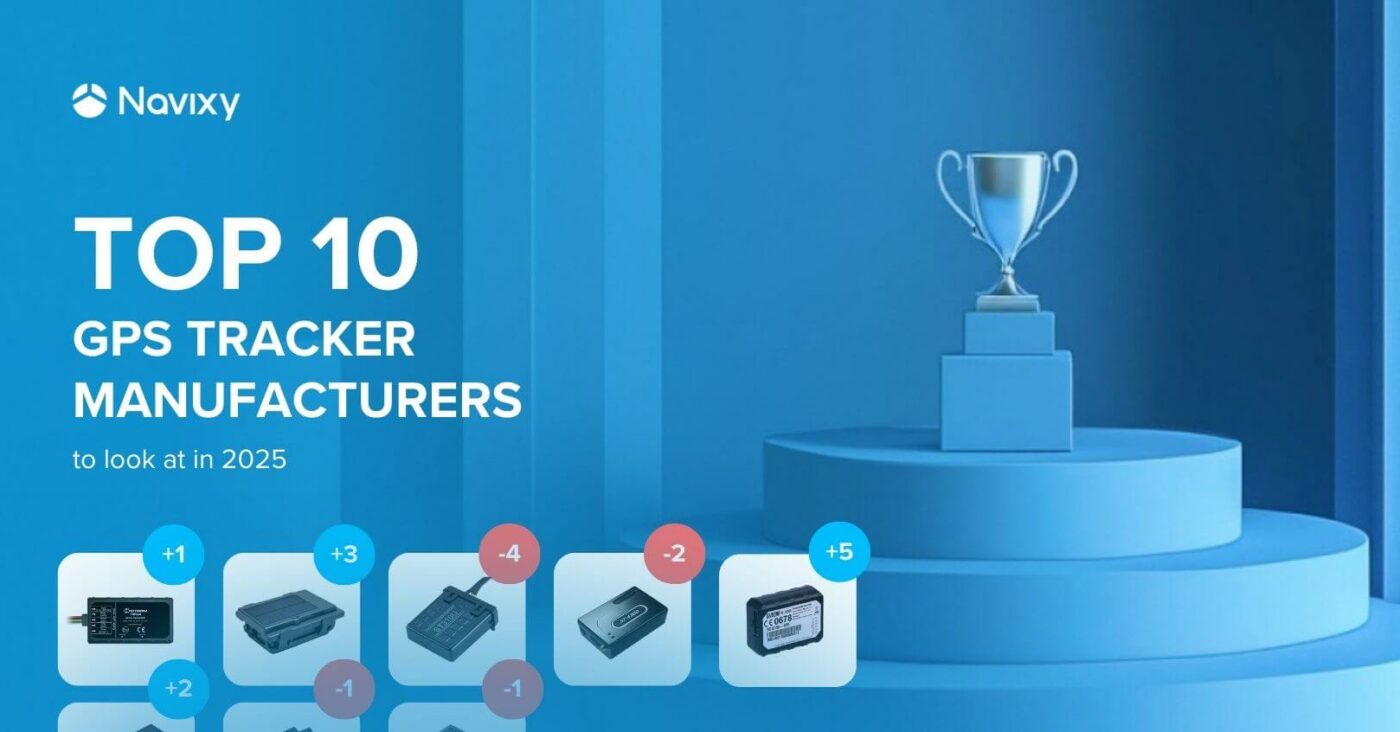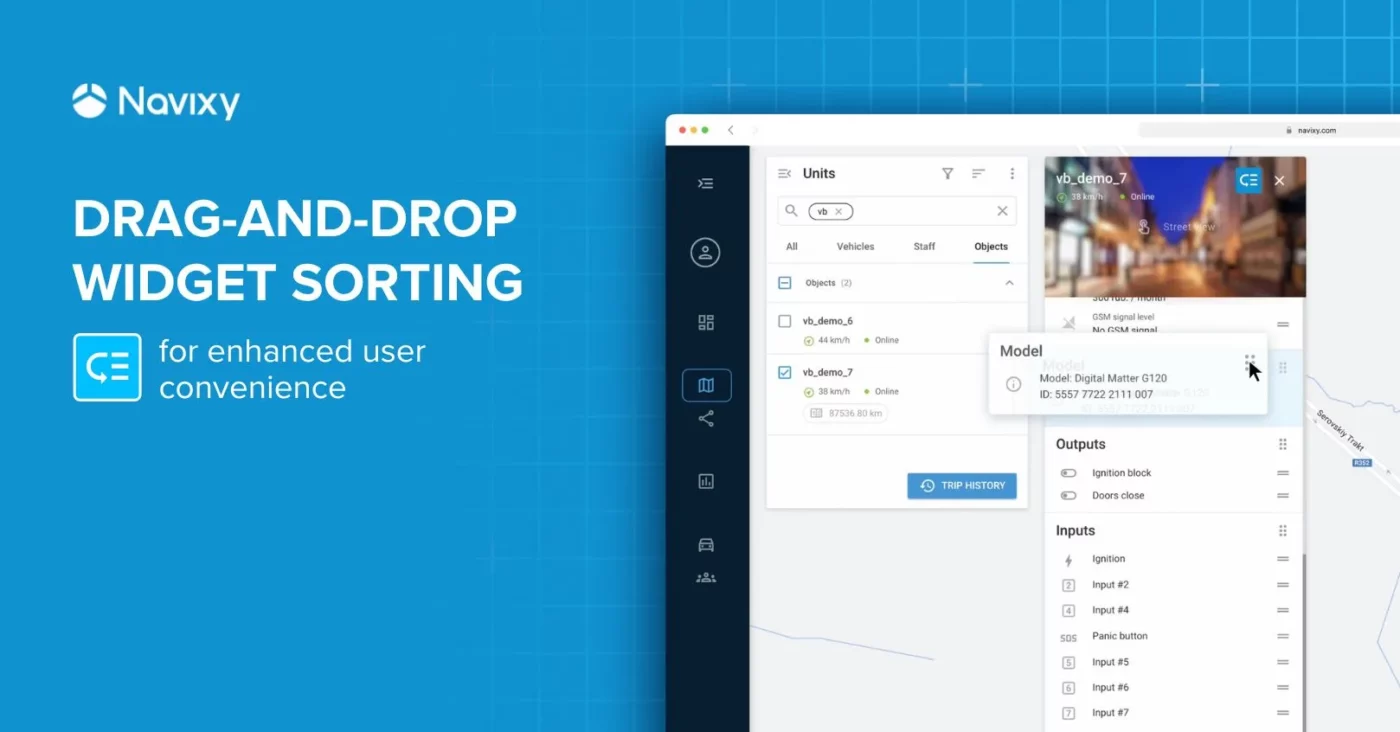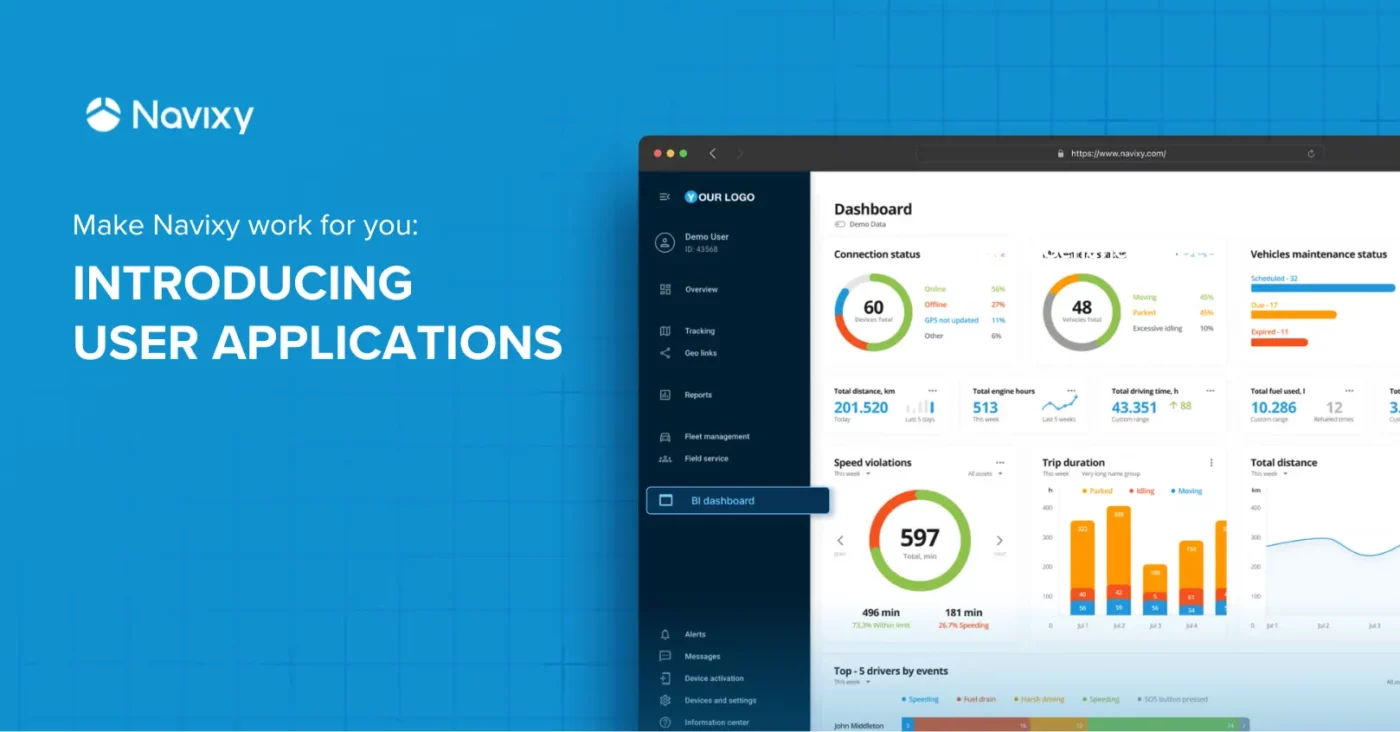Latin American countries face similar problems with respect to public transportation: traffic congestion, lack of investment and maintenance, insufficient coverage and frequency, insecurity, poor quality of service, and lack of integration and coordination, among other issues. This limits the mobility of people, affecting their quality of life, the economy, and more. To address these challenges, governments in this region have implemented a variety of solutions including infrastructure improvements, investment in innovative technologies, and regulatory reforms.
For example, in 2020, the city of Quito, Ecuador, announced Mobility Ordinance No. 017-2020, which seeks to improve the quality of the public transport service to save citizens travel time and reduce transportation costs and operation through a rationalization of the operating system.
According to this ordinance, Quito's urban public transport providers must be integrated with a government system to improve control and coordination through the implementation of quality standards and technology parameters. By complying with this ordinance, it’s possible for transport companies to update rates from 0.25 USD to 0.35 USD.
As demonstrated by Quito’s example, regulatory situations and public demand have increased interest in the implementation of new technologies in public transport units. This is where the Navixy API can offer great opportunities for troubleshooting.
Challenge: evaluation of minimum operating standards
One of the specific actions of the 2020 Ordinance is Resolution No. SM-2021-003, which seeks to guarantee the quality of service provided by public transport companies through a series of standards in reliability, safety, comfort, accessibility, productivity, and efficiency. Each area has indicators that measure everything from travel times, speed indices, environmental management, operating technology, and more.
Transport companies that register for evaluation by the Mobility Secretariat of Quito and remain compliant may obtain a route assignment and a fare increase. To maintain this status, companies must submit certain forms as established by the government, including a Bus Inventory Form, Operational Programming Form, Operations tables, and Service Quality Indicators Form.
Complying with these standards has been a challenge both technologically and personally, since an average of 2.3 drivers and passenger counting assistants will have to register with social security or install digital counting technology. Considering that the minimum wage in Ecuador is approximately 450 USD and the cost of affiliation to social security is approximately 600 USD per person, the annual cost of service for these people would amount to 15,600 per year without counting the mandatory contributions from the employer.
In addition, in accordance with the provisions of Resolution SM-2021-014, Quito's transport units must comply with a minimum required Global Navigation System (GNSS) / Global Positioning System (GPS) equipment with the following specifications:
Passenger counting devices
| Minimum number of doors | 3 |
| Power supply | 12 V DC to 24 V DC |
| Overvoltage protection | Protected against short circuits and false polarity |
| Structure | Aluminum |
| Measurement range | Ceiling height: 200 cm to 400 cm Reversible door width: 160 cm to 560 cm (depends on height) |
| Minimum registration events | Up, down, identified by door, the frame must include details of the ID or IMEI, date, time, coordinates in which the event was registered, door number and type of event. |
| Minimum counting effectiveness | 97% |
| U-turn detection | Yes |
| Separate counting of adults and children (Configurable height) | Yes |
GPS devices
| Transmission protocol | TCP, UDP, SMS |
| Serial port | RS232 |
| Digital inputs | 1 |
| Digital outputs | 2 |
| Programmable reporting | Reports vehicle status and position based on parameters such as distance, preset time intervals, mileage, or a combination of these. |
| Battery status alert | Yes |
| Bus ignition report | Yes |
| Special alert | Special alert based on the activation of the digital and/or analog inputs (closing and opening of doors, among others) |
| Remote activation | Ability to control the digital outputs of the GPS device remotely |
| Audible speed alert | Yes |
| Minimum internal geofences | 15 |
Solution provided by Algoritmun and API Navixy
Algoritmun is a company that integrates technological solutions. Founded in 2013 and headquartered in Quito, they have resellers in Mexico and have collaborated on projects in Australia, Indonesia, France, Colombia, Peru, Mexico, and the United States.
Algoritmun’s main product is the SIAL mobility platform for managing public transport fleets. They also perform hardware and software integrations for different business needs.
To help public transport companies comply with the aforementioned legislation, align quality standards, and offer valuable data for daily operation, Algoritmun has built a telemetry solution made up of the following elements:
- Installation of Queclink GV300W devices connected to Navixy
- Installation of a Visual Counter (passenger counting device) at the doors, with Time Of Flight technology that creates a 3D image of maximum clarity and precision from the infrared rays reflected from the passengers and the environment.'
- Algortimun's own development connector to integrate Queclink devices and translate the protocol of Visual Counter devices. The connector connects to the RS232 port of the Queclink device.
- Navixy Websocket API to receive the data from the counting and positioning device and send it to Algoritmun's SIAL.
- Algoritmun's SIAL application with key information, including the number of passengers who made a journey.
To obtain information on the number of passengers, Algoritmun takes frames from the device through the Navixy Websocket API and interprets it on its own instance. This data is presented in the Algorithm SIAL app that allows you to see the number of passengers per return, day, and month.
The data that the Navixy API obtains in this case includes:
- Device frame
- Kilometers traveled
- Average speed
- Travel time
- Geographical position
- Bus trip report
In addition to this data, Algoritmun calculates the important metrics to evaluate the profitability of the operation, such as:
- Number of passengers
- Expected collection of each route and total of the day
- Number of passengers per kilometer. In this case, we see the returns that represent good profitability in green, and returns with low profitability in red.
- Fuel consumption
It also allows you to see the amount of money collected per bus per month to assess the service’s profitability and presents other important metrics for this type of business.
Ticket evasion control
In addition to complying with the laws and allowing carriers to access better collections on the routes, Algoritmun also offers help with combating fare evasion.
In one of the cases analyzed, the collection team delivered less money daily than what had actually been collected with no way to check against the exact number of passengers. The paper was delivered by staff with counting data that no one could verify. Sometimes they did not even have these papers and only received the money that the driver gave them.
In an example offered by Algoritmun, we see that the number of tickets sold during one day was 968 with the collection delivered of 201.65 USD.
The data provided by the passenger counter shows the daily difference of $9, or approximately a 4% evasion rate.
According to the testimonies of Algoritmun, sometimes the evasion rate reached up to 20% per day. With 60 USD lost to daily evasion, we could estimate a loss of 18,000 USD per year for each bus.
Advantages of the Algoritmun and Navixy API solution
Currently, fifteen public transport operators in Quito – representing a total of 1,000 urban, interprovincial, and commercial passenger transport units – work with Algoritmun's solution. Some of these include, “Paquisha” Transport Cooperative, Trans Hemisféricos, Calderón Transport Cooperative, North Central Consortium, LLano Grande Cooperative, Quiteño Libre S. A. CIA. Alborada, Transport Company VIA Gala, Opernor, and Conetra.
Since there are several solutions for public transport management in the Ecuadorian market, the main advantages of the solution offered by Algoritmun and Navixy must be highlighted:
- Navixy is a highly efficient platform that allows you to analyze and receive data in real time thanks to the Navixy API.
- Exclusive distributor of high-precision passenger counting device (up to 99%) in Ecuador and Colombia.
- Support for electronic collection system through various means of payment. Those compatible with Algoritmun are: cash in coins, Visa and Mastercard credit cards, NFC Calypso and DesFire cards, intelligent identity card, and eWallet-type QR codes.
- Own development team that can adapt the necessary reports for each company in a period of approximately 1-2 weeks.
- Own fleet control system with bus schedules, profiles of all drivers, maintenance planning, counting of fines, and more.
- Opportunity to finance devices that allows the carrier to reduce the amount of initial investment.
Navixy API: The case in figures
By using the passenger counting solution, customers can expect the following benefits and savings:
- Compliance with Ordinance 017-2020 and its monthly indicators, which allows you to increase the collection of tickets from 0.25 USD to 0.35 USD (Ordinance 017-2020, Section II, Paragraph I). That represents 40% more profit from each ticket sold. Considering the increased fare, a bus can earn approximately 5,000 USD per month, or approximately 1,400 USD more than before, which is equivalent to 17,000 USD more per year.
- Savings from hiring 2 to 3 assistants per bus to collect tickets. Per year, the salary of ticket counting and collection personnel is approximately 15,600 USD. The initial investment in the installation of the Algoritmun solution (GPS + Passenger Count) is 2,500 USD, while the approximate savings is 13,100 USD per year.
- Rate evasion savings of between 4% to 20% per month. The average collection evasion rate is approximately 20 USD per day, 500 USD for 25 business days, and 6,000 USD per year.
The Navixy API allows companies like Algoritmun to create custom solutions for their business. This means that each company can take advantage of the benefits of the platform in relation to its own needs and objectives, such as complementing or expanding its product offering. The joint proposal has allowed Algoritmun to demonstrate how its unique solution can be used to reduce operating costs, while improving the user experience and complying with government entities.
It has been an interesting path that has put us to the test in many fields and has helped us open a new line of business that we did not have. It is very encouraging to work with a partner that has such a great product that both makes our customers happy and allows us to develop our own products.
- Pablo Alejandro del Hierro - Commercial Manager at Algoritmun
